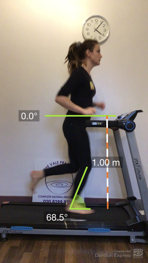Have you ever thought about how you stand, walk or run? Most people don’t think about it, right. They just get on with life doing these quite normal human things without any problems whatsoever.
But what happens when things go wrong? When your feet, back, knees etc start to ache, when your little niggling in jury becomes chronic and begins to affect your daily life. Then you start to alter the way you do the most normal things, be that standing, picking something off the floor, putting on socks, walking, running etc. You make little changes to your movement patterns to try to alleviate pain and discomfort and you may be more cautious of certain movement patterns in anticipation of pain.
jury becomes chronic and begins to affect your daily life. Then you start to alter the way you do the most normal things, be that standing, picking something off the floor, putting on socks, walking, running etc. You make little changes to your movement patterns to try to alleviate pain and discomfort and you may be more cautious of certain movement patterns in anticipation of pain.
Normally when you start to feel better your movement patterns or ‘biomechanics’ return to normal, but sometimes, and especially if you continually load the same body area, your brain starts to hardwire your biomechanics to accommodate this repetitive overload. This can set off a chain of adaptive and compensatory pattern affecting your gait, posture and general functional movement.
So….why is it always your (chose as appropriate) right/left knee, hip, foot, right or left lower back that gives you gyp. It may be an old injury or a medical condition that predisposes you to recurrent episodes of pain and biomechanical change. It may be your habitual standing posture, learned and reinforced over years by a combination of physical and psychological influences. Or it may be repetitive movement and gait patterns developed through sports, work or just everyday life. In short, how you have been bearing weight standing, walking or running for the last X number of years.
As you can see it gets quite complicated, so The Vale Practice has decided to try and eliminate as many variables as possible in our quest to find the possible causes of your pain so that, by being more informed, we can help to alleviate it and reduce reoccurrence.
Our osteopaths are highly skilled at interpreting posture and movement patterns; how a person distributes their weight and how this may be affecting them physically, just through visual and palpatory (what we can feel) cues. However, our feet are in contact with the ground for only 0.8 seconds for each step whilst walking and only 0.25 seconds for running. Standing weight bearing differences can also be quite difficult to quantify. Bearing this in mind, we accept that even the most skillful and experienced practitioner cannot accurately interpret how your feet, lower limbs, pelvis and the rest of the body move and bear weight in real time, and how the nuances of how your standing walking and running may affect you. So we decided to up our game.
At the Vale Orthotics and Gait Analysis Clinic we use a treadmill, motion capture software (ie slow motion video) and a highly sensitive 3D digital pressure plate to see in detail how you are moving, how you are weight bearing and therefore what may be the cause of your discomfort. Also, this can show us whether you may be at risk of problems developing in the future.
The pressure plate measures weight bearing deviations utilising 4096 pressure sensors at 500 hz whilst standing, walking or running to give us accurate static and dynamic force distribution data. The video motion capture enables us to study your biomechanics in detail. This information, combined with our biomechanical analytical expertise, gives us a sophisticated, accurate and repeatable clinical picture enabling us to offer exceptional and bespoke treatment options including not only osteopathy, acupuncture, taping, massage and exercise therapy, but also a range of orthotics to help encourage positive biomechanical changes, a reduction in pain and discomfort and often an increase in performance. Headlining this service is our state of the art, completely customised, 3D printed orthotics supplied through our manufacturing partner Phits insole (www.phitsinsoles.com).
With this sophisticated technology to hand we feel The Vale Practice is now uniquely placed to be able to offer a completely integrated approach to movement and weight bearing analysis, which ultimately allows us to give you a more informed and detailed treatment and rehabilitation program helping to return you to, or maintain, optimum physical health and fitness.
